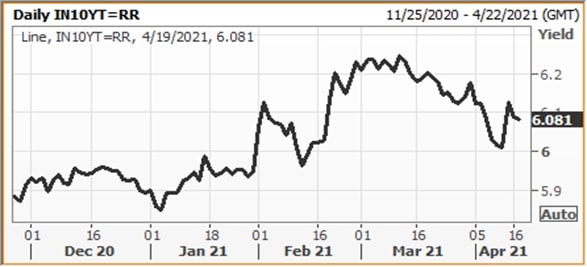
The outgo on pension for all central government employees and armed forces is estimated at Rs 1.89 lakh crore.
The abruptness and uncertainty around the impact of the pandemic prompted a coordinated multi-pronged aggressive monetary policy response around the world. Given that most economies were comfortable in terms of inflation prior to the pandemic, such aggressive actions seemed most effective and adequate in addressing the Covid shock.
However, as we approach the deliberations around the post-Covid policy framework, central banks worldwide will need to address several challenges in the times ahead as the trade-offs may be extremely difficult. Given that the mandates of most central banks’ have been diluted towards dual or multiple objectives, the credibility of them being able to stabilize inflation in an environment when interest rates are near record low remains in question.
Further, the unprecedented expansion of central bank balance sheets and their limited ability to unwind sharply to avert financial market distortions further may keep the risk-asset prices elevated thereby creating room for bubbles sooner rather than later.
However for now in the near term, markets will broadly focus on growth and inflation differentials across the DMs to gauge the duration of loose monetary policies. Broadly, we expect the DXY index to have a strengthening bias in the near term, although much will depend on the quantum of Fed tapering and the expected growth-inflation outcomes across the G3 in the medium term. Also, we need to consider the political constraints in Eurozone in terms of extending the Pandemic emergency purchase programme (PEPP) beyond its scheduled expiry of March 2022. This may reduce the monthly purchase marginally to EUR 65-70 bn per month between October-March2022 (from EUR 80-85bn currently).
All such uncertainties point towards significant volatility for the EM FX space going ahead. While growth is expected to remain a challenge, most EMs have started to feel the inflationary heat (even if considered as transitory) thereby increasing the policy dilemma. The surge in commodity prices is further expected to weigh on the import dependent EM economies (India and Indonesia).
Several economies (Brazil, Russia, Mexico, Turkey, Czech Republic, and Hungary) have already hiked rates to counter the inflation threats, while others will find it difficult not to follow suit if inflation risks persists.
Tracking global cues, rupee too has witnessed huge swings in FYTD22, ranging from 72.32-75.65. From being one of the worst performing Asian currencies in April, rupee emerged as the top-performer in May amid favorable global risk sentiments aided by Fed’s assurance of continued accommodation, plateauing domestic Covid curve, muted trade deficit, and RBI’s limited intervention to curb the gains.
More recently, though, rupee has again weakened by ~1.9 percent tracking elevated crude prices and strengthening US dollar. One notable feature of rupee moves have been minimal interventionist behaviour by the RBI. This clearly points towards the fact that while the RBI’s huge FX buffer will shield the economy against severe external shocks, it is unlikely to resist meaningfully any broad-based EM FX weakness arising from global factors.
While the spot FX market has witnessed relatively low RBI presence in FY2022, the forward market has continued to see reasonable action but on the reverse side. After aggressive paying by RBI in FY2021 which kept the forward premium significantly elevated, RBI started to unwind its huge US dollar long forward book (not just the scheduled maturity in Apr-May21 but probably also with RBI having taken early delivery of its maturity in the first week of June).
Market chatter suggests that a plausible reason for this sudden behavioural change of RBI is to lower the hedging cost of the FPI’s as India comes closer to inclusion to the global bond indices. The 1-year premia crashed to an intra-day low of 4.12% in early June 2021 from a high of 5.45% in mid-May. RBI’s long US dollar forward position is expected to have moderated to US$ 43-45bn compared to the peak of USD 73 billion witnessed in February 2021.
Recent up move in the premia suggests RBI is taking only partial deliveries of the maturities and rolling the rest, thereby indicating RBI’s comfort with current range.
Overall, as markets’ begin to price in global policy normalization, the strength in US dollar along with rising crude oil prices is expected to weigh on rupee. We expect RBI to intervene intermittently to avoid sharp weakness in rupee to limit the pass-through of imported inflation given the surge in input prices and sticky and elevated core CPI inflation.
Any intervention to curb the fall in rupee by the RBI will offset in-part the domestic liquidity infusion arising from deliveries of forward maturities and hence also provide bandwidth to support the government’s borrowing program as well.
For now in the near term until further explicit tapering signals from the Fed is provided, we expect USD-INR to remain in the current range of 73-75.50 in the near term. However, narrowing interest-rate differentials, vaccination progress and crude price are expected to keep the FX outlook volatile. We expect USD-INR range to shift towards 74-77 in 2HFY22 as markets begin to grapple with the widening current account deficits (from an estimated marginal surplus in 1QFY22), volatile capital flows, growth-inflation trade-offs and consequent global policy normalization.
The author is a Senior Economist at Kotak Mahindra Bank. The views and opinion expressed in the column are personal and do not necessarily reflect the opinion of the organisation or the Kotak group.
Disclaimer: The views and investment tips expressed by investment experts on moneycontrol.com are their own, and not that of the website or its management. Moneycontrol.com advises users to check with certified experts before taking any investment decisions.

